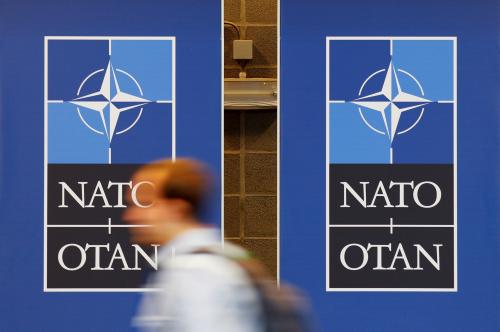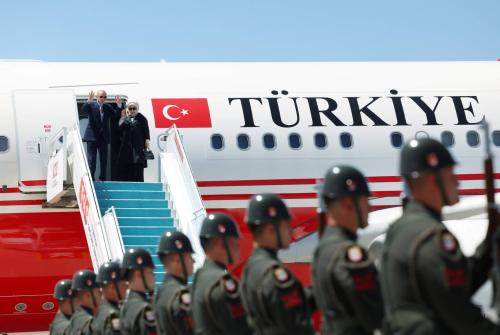With the kickoff of the NATO summit in Brussels, the contentious issue of military burden-sharing between America and its allies has again raised its head. Any hope that the summit may reinforce and showcase alliance solidarity at a tense and dangerous time in Europe may be squandered by this hardy perennial.
President Donald Trump is right that Germany, like many European allies of the United States, under-invests in the common defense. The best comparative measure of a country’s military burden-sharing is probably the size of its defense budget relative to gross domestic product (GDP). The United States spends about 3.5 percent of its GDP on the American armed forces; NATO’s minimum target for all its alliance members is 2 percent; Germany clocks in at roughly 1.2 percent. Give the Germans some credit—they have led the way at sustaining European Union sanctions on Russia over the war in Ukraine since 2014, they take in lots of immigrants, and they give lots of foreign aid. All these measures can enhance security. But even counting them, Germany spends perhaps half as much, as a percent of GDP, as America.
The net cost to the American taxpayer of having those forces in Germany rather than the United States is roughly zero.
However, as reported recently by the Washington Post, President Trump’s recent complaint has centered on the costs of keeping some 35,000 U.S. troops permanently stationed on German soil. Trump insinuates that this troop presence is mostly for NATO Europe’s benefit and that an ungrateful Berlin pays too little of the costs associated with basing them in Germany. On these points, Trump is more wrong than right. In fact, the net cost to the American taxpayer of having those forces in Germany rather than the United States is roughly zero. Trump needs to understand this fact as he meets with U.S. allies.
Why do I say the net cost is zero, when some official Pentagon documents and other studies suggest the cost is a few billion dollars a year, with only about $1 billion being covered by Germany, and the rest by the United States?
First, let’s get the big picture right. Those 35,000 GIs in Germany represent about five percent of the size of the entire active-duty American military. That means they cost about $30 billion a year—for salaries, equipment, training, facilities, maintenance, housing, and health care for troops and their families, and everything else the Department of Defense does in peacetime (excluding war expenses as well as funds spent on military reservists in this calculation). Thus, the $3 billion or $4 billion that Americans spend each year having U.S. forces in Germany—for building and maintaining infrastructure on bases, running schools for the children of military personnel, moving people across the oceans to and from the United States, and so on—amounts to less than 15 percent of their total cost.
In fact, the burden on the American taxpayer is even less than that. Many of those costs would have to be paid here in the United States if the forces were relocated to American soil. Kids of troops need to be schooled, bases need to have roads and buildings and utilities, units need to move about from base to base (and country to country) to do their jobs whether stationed at home or abroad. So saying that the annual cost of having U.S. troops and their families in Germany is $3 billion to $4 billion is not the same as saying that the extra costs are that high. The $1 billion Germany contributes each year to our presence there roughly covers the marginal costs.
In other words, to good precision, the net added costs of having American forces permanently based in Germany, rather than having them stationed in the United States, is about zero.
One could argue that the actual situation is even better than these calculations imply. Much of what these U.S. forces do would cost a lot more without access to German bases. For example, the major American air bases in Germany facilitate lots of movement of supplies and people into Iraq, Syria, Qatar, Kuwait, Afghanistan—and also Eastern Europe. Without the bases, we would need to buy lots more transport and refueling aircraft, as well as other logistics and transport assets, to do the job. Having American military bases in Germany thus saves the American taxpayer a good deal of money on balance.
Germany still gets the better of the overall alliance deal with America, and should do more, as should virtually every other NATO ally. But given America’s interest in having a strong foothold in Europe, a theater that delivered the planet two world wars when there was no such U.S. presence to help deter conflict, and given the modest costs of being there, we need to keep this transatlantic spat in perspective and not let it spin out of control.
The Brookings Institution is committed to quality, independence, and impact.
We are supported by a diverse array of funders. In line with our values and policies, each Brookings publication represents the sole views of its author(s).









Commentary
What Trump gets wrong on allied burden-sharing
July 11, 2018